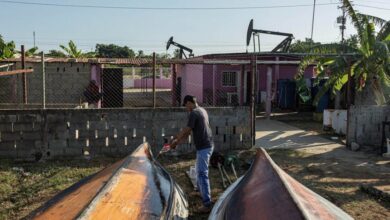The Rising Appeal of Latin American Theme Parks Revitalizes Tourism

Once overshadowed by their global counterparts, Latin American theme parks are emerging as vital tourism drivers, attracting millions annually. Based on a study published in the Tourism and Hospitality Journal, this analysis explores their impact on tourism demand, accessibility, and future growth in the post-pandemic era.
Theme parks have long been a cornerstone of the global tourism industry, offering visitors immersive experiences that blend entertainment with cultural and educational elements. While North American, European, and Asian parks like Disneyland, Universal Studios, and Europa Park dominate the industry, Latin American theme parks are gaining recognition as significant tourist attractions. In the aftermath of the COVID-19 pandemic, which devastated the global travel industry, these parks are poised to play a crucial role in revitalizing tourism in the region. This article delves into the factors contributing to the success of Latin American theme parks, their role in stimulating tourism demand, and the challenges they face in competing on the global stage.
In recent years, Latin American theme parks such as Six Flags Mexico, Beto Carrero World, Hopi Hari, La Feria de Chapultepec, and Parque Xcaret have attracted millions of visitors annually. These parks have become integral to the tourism industry in their respective cities, providing entertainment and significant economic benefits. The popularity of these parks is evident in the substantial growth in visitor numbers, with a 34% increase in global theme park attendance in 2022 compared to the previous year. Despite the pandemic’s impact, the resilience of these attractions has demonstrated their potential as key drivers of tourism in the region.
Accessibility and Transportation: The Key to Success
One of the most important findings from this study is the critical role that accessibility plays in the success of Latin American theme parks. The bus has emerged as the primary and most efficient mode of transportation for visitors, offering convenience and affordability. However, the study also reveals a high correlation between the success of these parks and their accessibility by air and land, particularly their proximity to major cities. For instance, Beto Carrero World in Brazil benefits from its proximity to the Navegantes airport. At the same time, Hopi Hari is strategically located near São Paulo, one of the largest metropolitan areas in Latin America.
The significance of transportation infrastructure cannot be overstated. The accessibility of theme parks by various modes of transport, including buses, airports, and even trains, directly impacts their ability to attract visitors. Latin American cities like Mexico City, Cancun, and Bogotá rely heavily on buses, highlighting a lack of other transportation options such as high-speed rail or subways. The study suggests that improving transport infrastructure could enhance the appeal of these parks, making them more accessible to domestic and international tourists.
Theme Parks as Economic Engines
Theme parks are not just entertainment venues but also powerful economic engines that contribute significantly to the local economy. They generate substantial revenue through ticket sales, concessions, and merchandise while creating jobs and supporting local businesses. The economic impact of theme parks extends beyond the gates, influencing various sectors such as hospitality, retail, and transportation.
For example, Six Flags Mexico, the most visited theme park in Latin America, plays a vital role in the local economy by attracting tourists who spend money on accommodations, dining, and other services. Similarly, Beto Carrero World has become a symbol of tourism promotion in the Santa Catarina region of Brazil, drawing visitors from across the country and abroad. These parks also contribute to the tax base of their respective cities, providing much-needed revenue for public services and infrastructure development.
While Latin American theme parks have made significant strides, they face several challenges that could hinder their future growth. One of the primary challenges is competition from global entertainment giants like Disney and Universal Studios, which have not yet entered the Latin American market. These companies possess vast resources and brand recognition, making it difficult for local parks to compete equally.
Additionally, the economic and political instability in some Latin American countries threatens the sustainability of the theme park industry. High inflation rates, safety concerns, and fluctuating exchange rates can deter international tourists and impact the profitability of these attractions. The pandemic has exacerbated these challenges, leading to a decline in foreign tourism and reduced discretionary spending.
Despite these challenges, there are significant opportunities for growth in the Latin American theme park industry. The study highlights the potential for new theme park developments in the region, driven by growing interest from major global players. The expansion of public transport networks, investment in infrastructure, and the adoption of innovative marketing strategies could further boost the appeal of these parks.
The Role of Marketing and Film-Induced Tourism
Marketing plays a crucial role in the success of theme parks, and Latin American operators are increasingly adopting innovative strategies to attract visitors. Film-induced tourism, in particular, has proven to be an effective tool for drawing crowds, as seen in parks that feature attractions based on popular movies and characters. The incorporation of themes from Marvel, Minions, Avatar, Harry Potter, and Disney has helped parks around the world capture visitors’ imaginations.
Latin American parks can benefit from similar strategies by creating themed attractions that resonate with local and international audiences. By leveraging the popularity of films and television shows, parks can enhance their brand image and attract a broader demographic. Additionally, digital marketing and social media campaigns can be powerful tools for reaching potential visitors and promoting new attractions.
The future of Latin American theme parks appears promising, but it will require strategic investments and planning. Governments and private operators must work together to improve the transportation infrastructure, making parks more accessible to a broader audience. This includes upgrading airports, expanding public transport networks, and developing new transportation options like high-speed rail.
Moreover, theme park operators must continue to innovate and adapt to changing consumer preferences. Integrating augmented reality (AR) and virtual reality (VR) technologies can create immersive experiences that attract tech-savvy visitors. Offering personalized packages that include flights, accommodations, and park entry can also enhance the overall visitor experience and increase revenue.
The importance of inclusivity cannot be overlooked. Parks should strive to offer services and discounts for people with disabilities, ensuring that these attractions are accessible to everyone. By doing so, they can appeal to a broader audience and foster a more inclusive tourism environment.
Latin American theme parks can potentially be significant players in the global tourism industry. While they may not yet rival the likes of Disneyland or Universal Studios, their impact on the regional economy and tourism industry is undeniable. By focusing on accessibility, embracing innovative marketing strategies, and investing in infrastructure, these parks can continue growing and attracting millions of visitors annually.
Also read: Digital Wallets Transform Financial Inclusion Across Latin America
As Latin America recovers from the pandemic, theme parks will play a critical role in revitalizing tourism and stimulating economic growth. The success of these attractions will depend on the collaboration between governments, operators, and local communities to create an environment that supports sustainable tourism development. With the right strategies in place, Latin American theme parks can thrive and become a must-visit destination for tourists from around the world.




